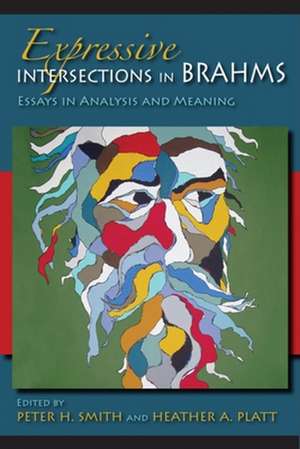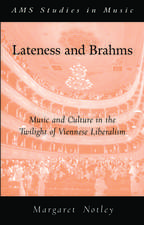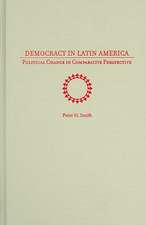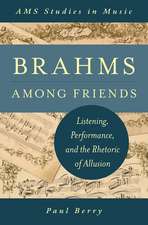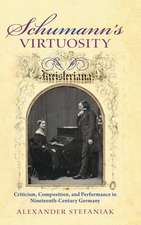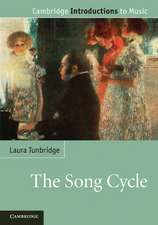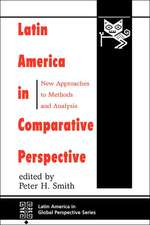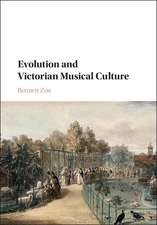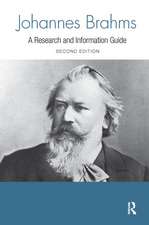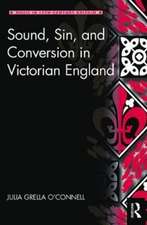Expressive Intersections in Brahms – Essays in Analysis and Meaning
Autor Heather Platt, Peter H. Smithen Limba Engleză Hardback – 17 iul 2012
Preț: 298.50 lei
Nou
Puncte Express: 448
Preț estimativ în valută:
57.12€ • 61.08$ • 47.62£
57.12€ • 61.08$ • 47.62£
Carte tipărită la comandă
Livrare economică 17 aprilie-01 mai
Preluare comenzi: 021 569.72.76
Specificații
ISBN-13: 9780253357052
ISBN-10: 0253357055
Pagini: 316
Ilustrații: 1 colour illustrations, 1 b&w illustrations, 93 music excerpts
Dimensiuni: 159 x 235 x 26 mm
Greutate: 0.66 kg
Editura: MH – Indiana University Press
ISBN-10: 0253357055
Pagini: 316
Ilustrații: 1 colour illustrations, 1 b&w illustrations, 93 music excerpts
Dimensiuni: 159 x 235 x 26 mm
Greutate: 0.66 kg
Editura: MH – Indiana University Press
Cuprins
AckowledgementsPart I 1. "The Wondrous Transformation of Thought into Sound": Some Preliminary Reflections on Musical Meaning in Brahms, Heather Platt and Peter H. Smith; 2. The Learned Self: Artifice in Brahms's Late Intermezzi, Steven Rings Part II 3. "Alte Liebe" and the Birds of Spring: Text, Music, and Image in Max Klinger's Brahms Fantasy, Yonatan Malin; 4. Brahms's Maidens in their Cultural Context, Heather Platt; 5. Ancient Tragedy and Anachronism: Form as Expression in Brahms's Gesang der Parzen, Margaret Notley Part III 6. Sequence as Culmination in the Chamber Music of Brahms, Ryan McClelland; 7. 'Phantasia Subitanea': Temporal Caprice in Brahms's Op. 116, nos. 1 and 7, Frank Samarotto; 8. Monumentality and Formal Processes in the First Movement of Brahms's Piano Concerto No. 1 in D Minor, op. 15, James Hepokoski; 9. The Drama of Tonal Pairing in Chamber Music of Schumann and Brahms, Peter H. SmithBibliography; List of Contributors; Index
Recenzii
In the work of these authors we encounter the productive intersection of the best analytical tools that contemporary music theory has to offer--Schenkerian analysis, sonata theory, semiotics, recent theories of rhythm and meter, and neo-Riemannian theory--and cultural criticism of the highest order. These scholars are musically sensitive and culturally savvy, and what they have to offer, both in broad strokes and in the nuance of the tiniest detail, is not to be missed.--Patrick McCreless, Professor of Music, Yale University
Notă biografică
Descriere
Shows how Brahms organized musical elements for expressive purposes
